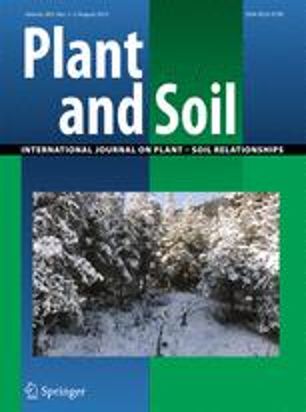Ver ítem
- xmlui.general.dspace_homeCentros e Institutos de InvestigaciónCIAP. Centro de Investigaciones AgropecuariasInstituto de Investigación Animal del Chaco SemiáridoArtículos científicosxmlui.ArtifactBrowser.ItemViewer.trail
- Inicio
- Centros e Institutos de Investigación
- CIAP. Centro de Investigaciones Agropecuarias
- Instituto de Investigación Animal del Chaco Semiárido
- Artículos científicos
- Ver ítem
Non-linear dynamics of litter decomposition under different grazing management regimes
Resumen
Aims: To understand and model the dynamics of litter decomposition in a climatically seasonal region subject to different modalities of land pasture management.
Methods:
Decomposition was quantified through the litterbag technique. Sampling was performed at monthly intervals on an annual basis with replications for 2008, 2009 and 2010. Treatments were native vegetation (NV) and grazed (G), grazed and N-fertilized (GF), hayed (H), hayed and N-fertilized
[ver mas...]
Aims: To understand and model the dynamics of litter decomposition in a climatically seasonal region subject to different modalities of land pasture management.
Methods:
Decomposition was quantified through the litterbag technique. Sampling was performed at monthly intervals on an annual basis with replications for 2008, 2009 and 2010. Treatments were native vegetation (NV) and grazed (G), grazed and N-fertilized (GF), hayed (H), hayed and N-fertilized (HF) plots. For each combination of treatment and year, a sigmoid model was fitted. Parameters included remnant litter, steepness and inflection of decomposition curve.
Results:
The sigmoid model adjusted excellently well the data. In considering the overall effect on litter decomposition, treatments differ among them as follows symbolically: ((GF > G) > (HF > H)) > > NV. Results are consistent across the yearly replications.
Conclusion:
Pasture management (grazed versus hayed) is the primary factor controlling the rate of decomposition, whereas fertilization has a secondary role. The sigmoid model captures realistically the different phases of decomposition detected over a year, namely stationary at conditions of low temperature (later autumn and winter), accelerated at increasing temperature and humidity (transition from spring to summer) and decelerated when residual organic matter becomes less profitable and weather conditions more stringent (summer and earlier autumn).
[Cerrar]

Autor
Banegas, Natalia Romina;
Albanesi de Garay, Ada Susana;
Pedraza, Raúl Osvaldo;
Dos Santos, Daniel Andrés;
Fuente
Plant and soil 393 (1–2) : 47–56. (August 2015)
Fecha
2015-08
Editorial
Springer
ISSN
0032-079X
1573-5036 (Online)
1573-5036 (Online)
Formato
pdf
Tipo de documento
artículo
Palabras Claves
Derechos de acceso
Restringido
 Excepto donde se diga explicitamente, este item se publica bajo la siguiente descripción: Creative Commons Attribution-NonCommercial-ShareAlike 2.5 Unported (CC BY-NC-SA 2.5)
Excepto donde se diga explicitamente, este item se publica bajo la siguiente descripción: Creative Commons Attribution-NonCommercial-ShareAlike 2.5 Unported (CC BY-NC-SA 2.5)

